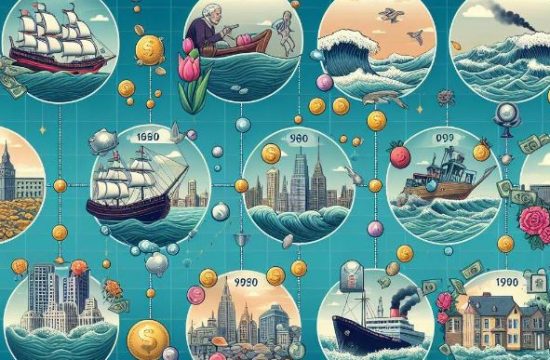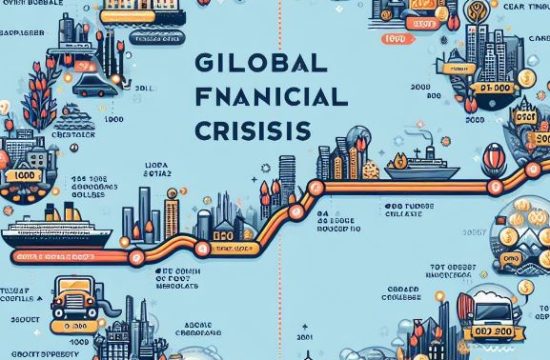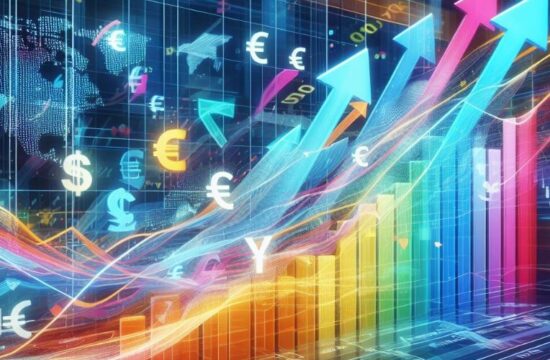The global financial crisis, which started in 2008 with America’s subprime mortgage issues, once again demonstrated that the world economy cannot be independent of the actions of other countries. Similarly, South Korea’s era of low interest rates, low oil prices, and a strong won, as well as the foreign exchange crisis, are merely facts showing that we are part of the global market.
Even before that, we were part of the world economy. We grew through exports and acquired physical, social, and technological skills by observing the wider world.
On the other hand, it has not been very long since we began opening our financial or capital markets to foreign countries. For example, the opening of our country’s stock market happened in the early 1990s. Even then, foreigners could only invest through offshore funds sold by investment trusts, as the name suggests, offshore funds were securities exclusively for foreigners. Later, the range of direct investment gradually increased until the foreign investment restrictions were removed on May 25, 1998, during the foreign exchange crisis.
Following this, foreign capital flowed massively into Korea’s undervalued stock market, owning over 40% of the total market capitalization of Korean stocks by 2004. The sharp rise in our stock market during the 1998 crisis was also due to the influx of foreign capital.
As a result, companies known as representatives of Korea can no longer be said to be Korean. For instance, foreign ownership of POSCO once reached 54%. It is the same with Samsung Electronics and the mobile communications giant SK Telecom; as of April 2024, 55% of Samsung Electronics is foreign-owned.
Our stock market is filled with foreign companies, and now distinguishing between Korean and foreign investors hardly makes sense. The issue is that these are not long-term investors and there is a significant disparity in the funds’ scale, further destabilizing the financial market.
Foreign capital began selling off stocks for profit-taking starting in 2005. With the surfacing of the US subprime mortgage crisis in June 2007, there was almost a panic sell-off to cover the liquidity shortage on Wall Street. The sharp decline in the value of the won in South Korea’s foreign exchange market in 2008 is largely due to this reason.
International finance is often shrouded in conspiracy theories because the movement of funds itself escapes the control of any single government. If the Rothschilds were at the core of international finance in the past, today hedge funds, represented by George Soros, occupy that place.
:max_bytes(150000):strip_icc()/Primary-Image-how-to-finance-a-vacation-home-7484955-1ddf66ed26284ded8cb3b5fabecd595c.jpg)
The Rothschild family emerged as international financiers in the late 1700s after managing the funds of William IX, the Duke of Hesse-Kassel in Germany. The founding father of the Rothschild family, Mayer Amschel, had five sons who established banks in major cities across Europe, rising as tycoons of international finance due to their funds and information networks.
In 1810, after the death of Barings, the ruler of the London Stock Exchange, Nathan, the third son of the Rothschild family residing in London, began to rise. He used Europe’s communication networks to spread false news that Napoleon had won the Battle of Waterloo, causing stock prices to plummet before he scooped them up. It is said that by the time the London Stock Exchange closed on July 19, 1815, Nathan owned 62% of all listed stocks. The next day, when the true news of Napoleon’s defeat came in, the stocks rebounded, and Nathan reportedly made a profit over 20 times his investment in one day. In this way, the Rothschilds became wealthy amidst the world’s turmoil.
In 1981, the British investment authority ‘Institutional Investor’ named George Soros as ‘the greatest fund manager on earth.’ However, about a decade later, in 1992, the British would come to see this great fund manager as an adversary when the Bank of England was outmaneuvered by Soros’s hedge fund. Soros predicted a ‘massive crash of the pound’ through the media while mobilizing a vast amount of cash to attack the Bank of England. The cash he directly mobilized amounted to about 10 billion dollars, and including the funds that followed his lead, the offensive totaled approximately 110 billion dollars. Ultimately, the Bank of England had to surrender.

This incident significantly elevated Soros’s international profile and starkly demonstrated to the global community how central banks could become prey to hedge funds if they mismanage their foreign exchange policies. George Soros did not rest after devastating the UK in 1992. In July and August of 1993, another European currency crisis erupted with the French Franc, Belgian Franc, and Danish Krone plummeting against the German Mark. Soros once again speculated against Europe’s central banks, earning more money than he had from the Bank of England.
Malaysian Prime Minister Mahathir Mohamad called Soros the ‘devil of capitalism.’ Hedge funds, which began to prominently emerge in the 1990s, pursue ‘high income, high risk,’ contrary to the literal meaning of ‘hedge,’ which implies putting up a fence or preventing loss. In finance, ‘to hedge’ typically refers to reducing risk, but hedge funds are speculative forces aimed at maximizing returns by any means.
These funds are characterized by tolerating excessive debt and utilizing short selling as an investment strategy. Short selling involves borrowing securities that one does not own to sell them, and then buying them back from the market after a certain period. This strategy profits from falling stock prices.
Another characteristic of hedge funds is seeking out inefficient markets for arbitrage opportunities. Paradoxically, hedge fund strategies can theoretically have a positive impact on the market. By selling overvalued assets and investing in undervalued ones, they can correct prices that are moving abnormally. The UK was targeted because the British government was artificially supporting the value of the pound. Thus, any government that sets targets and supports its currency value or stock market can become a target for hedge funds, as these represent inefficient markets.
The method used by hedge funds to attack a nation’s currency in financial markets includes borrowing and short selling strategies. Simple strategies involve borrowing the currency of the target country to buy dollars, or short selling the currency. If the targeted currency plummets, the relatively increased value of the dollar is sold and the devalued currency of the nation is bought back cheaply to repay the borrowed money, securing a profit.
If someone in our country were to buy dollars indefinitely, the value of the dollar would eventually rise, and the value of the won would fall. The problem is that this requires a tremendous amount of money that can impact prices. However, if one can short sell or borrow money like a hedge fund, it is possible. This could be considered not just exploiting market inefficiencies but manipulating the market.
As George Soros himself said, “I make money from crises,” crisis zones become targets for hedge funds. Events like the 1992 collapse of the British pound, the 1994 Mexican financial crisis, and the 1997 Asian financial crisis that started with the crash of the Thai baht all had hedge funds and their hot money in the background. Moreover, these funds often establish paper companies in tax havens like the Cayman Islands to avoid various regulations.
The hedge fund industry began in 1949 when Alfred Jones launched a long-short fund. Subsequent figures like Julian Robertson, who managed the Tiger Fund in 1986, and George Soros, who led the Quantum Fund in 1992, demonstrated remarkable returns, bringing hedge funds into the spotlight. Tiger Fund achieved a 43% annual return in its first six years, and as mentioned earlier, George Soros made a billion dollars in a month by attacking the British pound in 1992.
Not all hedge funds have been successful, though. In 1994, Wall Street’s renowned fund manager and derivatives theorist, Nobel Laureate Robert Merton, and David Mullins, Vice Chairman of the Federal Reserve and a potential future Chairman, joined to form a dream team. They established the hedge fund Long-Term Capital Management (LTCM), armed with theory and practice. However, this fund spectacularly failed, losing $120 billion and going bankrupt within four years.

Long-Term Capital heavily purchased Russian government bond futures while short selling U.S. Treasury bonds. However, on August 17, 1998, Russia declared a moratorium, rendering its bonds worthless. Soros’s Quantum Fund also had its share of bad times. It lost $600 million from investments in the Japanese yen in 1994 and early 1995, and when Russia declared its moratorium in 1998, it suffered a $2 billion loss. The fund’s investment in the euro in 1999 ended in failure, and an excessive investment in cutting-edge IT stocks towards the end of the 1990s resulted in enormous losses due to the dot-com bubble collapse. Subsequently, the Quantum Fund is known to have changed its name and revised its strategy.
The International Financial Services London (IFSL), a think tank based in London, estimates that over 10,000 hedge funds are active in the international financial markets, with assets exceeding $2 trillion. In a unified international financial market opened by countries’ financial markets, this level of capital moving together can be a formidable weapon. The Asian financial crisis can indeed be attributed to such funds. In 1996, foreign capital exceeding $100 billion entered five countries including South Korea, Malaysia, Thailand, Indonesia, and the Philippines. However, as these funds began to rapidly withdraw their investments in 1997, all these countries experienced a currency crisis. Hedge funds also played a role in the steep decline of the South Korean stock market at the end of 2008. Essentially, hedge funds create bubbles as stock prices surge, and conversely, accelerate capital flight, bursting the bubbles they created.
To this extent, rather than making inefficient markets efficient, their strategy involves participating in price formation to manipulate prices. Moreover, the counterparts are mostly markets filled with many ‘dwarfs.’ Soros, in his book ‘The New Paradigm for Financial Markets,’ politely describes such investor behavior as participatory or manipulative functions, but in simple terms, it’s about influencing and manipulating market flows beyond just understanding them. Although one of the giants of the international financial markets, it is difficult to call them the good Snow White.
Economic recovery is only healthy when it comes on its own. If the economy recovers due to artificial stimulation, there will inevitably be leftovers to deal with during a recession, creating new imbalances from these unresolved remnants. ~Joseph Alois Schumpeter
Every time a crisis occurs, theories of a 10-year cycle emerge. In Korea, there are theories of a 10-year cycle in real estate and stocks. Whether by coincidence or not, the Korean economy has experienced cycles of recession and boom every ten years, and the 10-year cycle in real estate and stocks reflects these economic changes.
There are also people who describe an individual’s life in 10-year cycles, suggesting that everyone faces opportunities and crises every ten years. There is also a 10-year cycle theory in the Netherlands, where enthusiasts believe that every ten years their country will have the strongest soccer team, although this is more of a hopeful assertion.
There is a theory in economics known as Juglar cycles, which posits a 10-year economic cycle. However, explaining today’s crisis 10-year cycles through investment in equipment is inadequate. Nevertheless, the world has had to experience global economic crises every ten years, such as the oil shock of the 1970s, the Latin American debt crisis of the 1980s, the Asian financial crisis of the 1990s, and the U.S.-initiated financial crisis of the 2000s.
The saying ‘a lot can change in ten years’ might hold the answer. In ten years, small changes accumulate to create significant visible transformations, or it’s enough time to forget past crises completely. Every economic crisis is similar yet appears in a different form. This novelty plunges people into a mental panic, amplifying changes into crises. However, there are always similarities in every crisis. The notion that the flap of a butterfly’s wings in Brazil can cause a tornado in Texas suggests that major events and significant policies impacted by these events do not just disappear.











